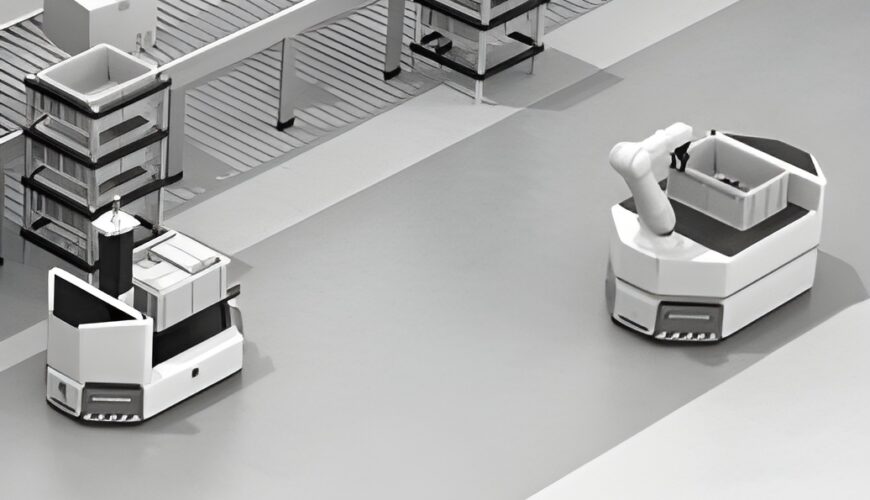The e-commerce landscape has undergone a radical transformation over the past several years. Increasing consumer demand for faster delivery, greater order customization, and 24/7 availability has pushed fulfillment operations to adapt rapidly. As a result, automation technologies, especially Autonomous Mobile Robots (AMRs), have gained significant traction.
AMRs are no longer just the latest buzzword in logistics—they’re a viable, scalable tool used by many leading e-commerce and omnichannel retailers. But does that mean they’re right for every operation?
The short answer: not necessarily. While AMRs offer powerful advantages, they are not a one-size-fits-all solution. Like any major investment, they require thoughtful evaluation as part of a broader, engineering-based decision process.
This article outlines the benefits, limitations, and key decision criteria to help you determine whether AMRs align with your business goals.
What Are AMRs and Why Are They So Popular?
At their core, AMRs are self-navigating, intelligent transport robots designed to move materials within a warehouse or distribution center. They rely on advanced sensors, AI, and sophisticated navigation algorithms to find optimal paths without human intervention or fixed infrastructure like conveyor belts or rails.
Unlike traditional AGVs (Automated Guided Vehicles), AMRs don’t follow fixed routes. They adapt in real time to their environment, avoiding obstacles, rerouting around congestion, and adjusting to changing workflows.
Over the past few years, AMRs have become especially attractive for e-commerce operators due to several key benefits:
Key Advantages of AMRs:
-
Reduced labor dependency: AMRs can minimize the need for human travel time between pick locations, allowing workers to focus on value-added tasks.
-
Scalability: Systems can start small and grow incrementally as your operation expands.
-
Flexibility: Easily adapted to layout changes, product shifts, or process reconfigurations.
-
Rapid deployment: Many AMR systems can be deployed in weeks or months—not years.
-
Lower upfront infrastructure investment: No need for extensive fixed automation or facility redesigns.
-
Improved pick rates and accuracy: By bringing work to people (goods-to-person), AMRs can increase pick density and overall throughput.
These advantages make AMRs ideal for fast-moving e-commerce operations, particularly in environments with high SKU variability, seasonal demand swings, or rapidly changing product mixes.
But Are AMRs Right for Your Operation?
While AMRs are a powerful tool, they are not the best fit for every business. The decision to implement AMRs should not be driven by hype or competitive pressure—it should be based on a holistic evaluation of your specific operational needs, constraints, and objectives.
Every fulfillment operation is unique. Warehouse layout, order volume, SKU characteristics, labor availability, and service-level expectations all play a role in determining the most effective automation strategy.
To make an informed decision, AMRs should be considered as one of several potential solutions in a comprehensive comparative engineering analysis.
A Strategic Evaluation Framework
When evaluating AMRs—or any automation technology—your team should compare multiple alternatives based on the following dimensions:
1. Capital Investment
What is the total cost of ownership, including hardware, software, integration, and maintenance? How does this compare to conveyor systems, manual processes, or other automation technologies?
2. Labor Cost Impact
How will AMRs affect your staffing levels and labor cost structure? Will it reduce reliance on temporary or seasonal labor? Are you able to reassign workers to higher-value tasks?
3. Service Level Contribution
Will AMRs improve order accuracy, reduce fulfillment time, or enable faster cut-off times? How do they support your service-level agreements (SLAs) and customer expectations?
4. Return on Investment (ROI)
How soon will the investment pay for itself? Are there soft benefits—such as increased flexibility or risk mitigation—that should be included in the ROI calculation?
5. Capacity and Throughput
Will AMRs help increase order processing capacity during peak periods? How well do they handle high order volume or SKU diversity?
6. Flexibility and Scalability
Can the solution scale with your growth? How easily can it adapt to new products, order profiles, or operational strategies?
7. Implementation Timeline and Complexity
How long will it take to design, install, and fully operationalize the solution? Are there training, IT, or change management hurdles to overcome?
8. Risk Factors
What operational, technical, or financial risks are associated with this solution? How resilient is the system to disruptions, malfunctions, or supply chain delays?
Why Engineering-Based Analysis Matters
Far too often, businesses jump into automation decisions based on isolated metrics (e.g., labor savings) or vendor promises without considering the full operational picture. This can lead to suboptimal investments that fail to deliver expected outcomes.
An engineering-based analysis compares each potential solution—including AMRs—against a baseline model, which may be your current operation in a reengineering project. By modeling alternatives side-by-side using simulation, data analysis, and ROI modeling, you gain objective insight into which strategy delivers the best overall value.
Where Do AMRs Fit Best?
AMRs are particularly effective in the following scenarios:
-
E-commerce operations with high SKU variety and low order quantities (lines/pieces)
-
Fulfillment centers with frequent seasonal spikes or shifting demand
-
Businesses operating in labor-constrained markets
-
Companies that require fast implementation or minimal infrastructure changes
-
Organizations looking to scale gradually without large capital outlays
However, operations with highly repetitive workflows, long travel distances between zones, or high-volume pallet movements may benefit more from fixed automation, AS/RS, or conveyor-based systems.
Final Thoughts: Fit First, Then Automate
AMRs have matured rapidly over the past few years, offering an increasingly compelling mix of performance, flexibility, and cost-effectiveness. But like all technologies, they must serve a business purpose—not just a trend.
The smartest fulfillment strategies start with a clear understanding of your operation, your constraints, and your goals. Only then can you select the right tools to drive efficiency, growth, and customer satisfaction. Engineer ideal processes first. Create a model of current processes, systems, infrastructure, and labor to serve as the base against which all other options/alternatives will be compared.
Want to Explore Whether AMRs Are Right for You?
Let’s discuss your operation and evaluate potential solutions based on data, process, and ROI—not hype.
📞 Call us at 856-797-1933 to start the conversation.


